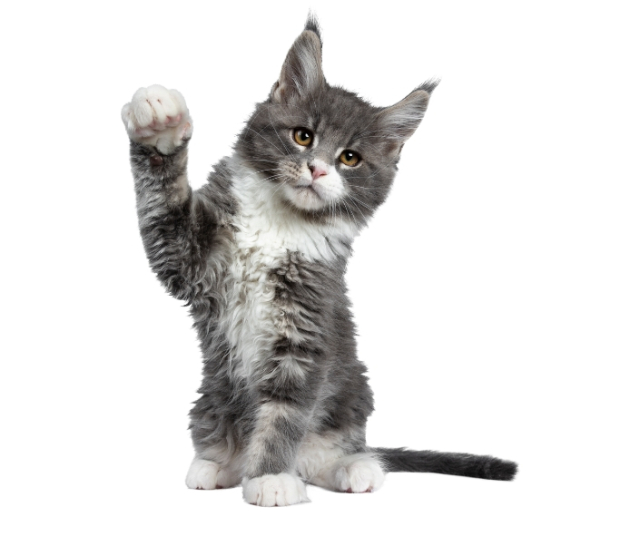Since time immemorial, the relationship between celestial bodies and the behavior of living beings has been the subject of fascination and speculation. Among the various creatures that share our home, cats have been especially enigmatic in this regard. One of the most deeply rooted myths is the influence of the moon on the behavior of these felines.
The Moon and Catophile Myths
For centuries, popular wisdom has linked the activity of cats with the different lunar phases. It has been said that during a full moon, cats become more playful and active, while on new moon nights, they tend to show more reserved behavior. However, is there any truth behind these myths or are they simply old wives' tales?
Full Moon Nights and Feline Madness
The belief that cats become more active during full moon nights is rooted in the idea that the extra light from the moon stimulates their hunting instincts. Theory suggests that by replicating daytime lighting conditions, cats may be more inclined to explore and hunt at night. However, animal behavior experts argue that this association may be due more to human perceptions than actual changes in feline behavior.
A study published in the Journal of Applied Animal Welfare Science analyzed the behavior of domestic cats in controlled environments during different lunar phases. Surprisingly, the results showed no significant correlation between the cats' activity and the different phases of the moon. This suggests that the belief in feline madness during full moon nights could be more of a myth rooted in popular culture than an observable reality.
The New Moon and Reserved Behavior
Contrary to the belief in madness during the full moon, it is said that on new moon nights, cats tend to become more reserved and withdrawn. The absence of moonlight, according to this belief, can make cats feel less safe exploring their nocturnal environment. However, research in this field has not yet produced conclusive results supporting this theory.
The Scientific Side: Is There Something More Than Myths?
Delving into the scientific side of the relationship between cat behavior and the moon, it is crucial to examine in detail how research has addressed this intriguing connection. Although myths have woven compelling narratives over time, science, with its objective approach, has sought to discern between fantasy and reality.
1. The Influence of Light on Night Behavior:
A central aspect of the research focuses on the influence of light on the nocturnal behavior of cats. The superior vision of felines in low lighting conditions is well known, and it has been speculated that lunar light could be a factor that stimulates their activity. However, it is essential to understand that unlike artificial light, natural moonlight may not be intense enough to significantly affect cat behavior.
Research has shown that artificial light can influence the circadian rhythm of cats, regulating their sleep-wake cycle. However, moonlight, although present, may not have the same impact, as cats are naturally adapted to nightlife.
2. The Instinctive Behavior of Cats:
Another aspect that scientists have explored is the relationship between cats' behavior and their natural instincts. Felines, as nocturnal predators, have developed intrinsic behavioral patterns throughout evolution. Hunting, playing, and exploring are essential activities for your well-being, regardless of lunar conditions.
This raises the crucial question: is the moon a determining factor in cats' behavior, or are their natural instincts driving their actions? Evidence suggests that biology and genetics play a bigger role in feline behavior than the changing phases of the moon.
3. Considerations about the Environment and Adaptation:
Another scientific approach focuses on the adaptation of cats to their environment. While some animals may show behavioral changes in response to external environmental factors, cats tend to be resilient and adaptable creatures. Its ability to adjust to different light conditions and nighttime environments could be a more plausible explanation for its actions than the direct influence of the moon.
The adaptation of cats to domestic life is also an important element. The sleep and activity patterns of domestic cats may be more influenced by routines and interactions with their owners than by lunar phases.
4. Limitations in the Research:
It is vital to recognize the limitations in existing research. Although studies have been carried out on cat behavior in relation to lunar phases, many of them have been limited in scope and their results are not always conclusive. The complexity of factors influencing cat behavior, coupled with individual variability among felines, presents challenges in establishing clear causal connections.
5. The Need for Continued Research:
To gain a more complete understanding, it is essential to continue research in this field. The application of modern technologies, such as behavioral monitoring devices and long-term studies, could provide a more detailed and accurate view of how cats respond to different light and environmental conditions.
After exploring myths, scientific research, and personal experiences, the connection between your cat's behavior and the moon appears to be more of a cultural phenomenon than a scientific reality. While moonlight can influence cats' nocturnal behavior, the moon phases themselves do not appear to have a significant impact.
It is important to remember that each cat is unique and may respond differently to its environment. Factors such as age, health, personality, and interaction with its owner play a crucial role in its behavior. Instead of relying on myths, it is essential to observe and understand your cat's individual needs to provide a nurturing and satisfying environment.






